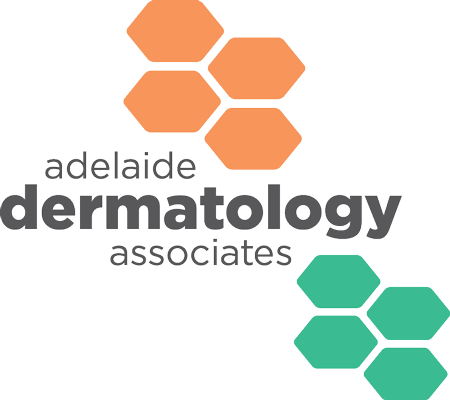Hyperhidrosis
What is Hyperhidrosis?
Hyperhidrosis is the name given to excessive and uncontrollable sweating. Excessive sweating without any underlying medical condition is called primary hyperhidrosis and this is the most common form of hyperhidrosis. Primary hyperhidrosis appears to be due to overactivity of the hypothalamic thermoregulatory centre in the brain, and is transmitted via the sympathetic nervous system to the eccrine sweat gland.
Triggers to attacks of sweating may include–
• Hot weather
• Exercise
• Fever
• Anxiety
• Spicy food
If the cause of excessive sweating is due to an underlying medical condition, this is known as secondary hyperhidrosis.
Causes of secondary localised hyperhidrosis include-
• Stroke
• Spinal nerve damage
• Peripheral nerve damage
• Surgical sympathectomy
• Neuropathy
• Brain tumour
• Chronic anxiety disorder
Causes of secondary generalised hyperhidrosis include-
• Obesity
• Diabetes
• Menopause
• Overactive thyroid
• Cardiovascular disorders
• Respiratory failure
• Other endocrine tumours, eg phaeochromocytoma
• Parkinson disease
• Hodgkin disease
• Drugs: caffeine, corticosteroids, cholinesterase inhibitors, tricyclic antidepressants, selective serotonin reuptake inhibitors, nicotinamide and opioids
Hyperhidrosis (HH) is caused by overactive sweat glands. There is increased release of a chemical (acetylcholine) from the central nervous system which causes sweat glands to produce excessive perspiration.
HH significantly affects the social and psychological wellbeing of an individual. It may cause physical discomfort, social embarrassment, affect occupational and daily activities, and at times social isolation. Many who have the problem find it embarrassing, trying to avoid shaking hands and hiding sweat stains by wearing black or jackets even during Summer.
Axillary HH refers to severe sweating under the arms. It also commonly affects the palms and soles and less often elsewhere on the body and face.
What is the treatment of hyperhidrosis?
General measures
• Wear loose-fitting, stain-resistant, sweat-proof garments
• Change clothing and footwear when damp
• Socks containing silver or copper reduce infection and odour
• Use absorbent insoles in shoes and replace them frequently.
• Use of special moisture absorbing socks (bamboo socks etc) often available in hiking stores
• Use a non-soap cleanser
• Apply talcum powder or corn starch powder after bathing
• Avoid caffeinated food and drink
• Discontinue any drug that may be causing hyperhidrosis
• Apply antiperspirant
Topical antiperspirants
• Antiperspirants contain 10–25% aluminium salts to reduce sweating
• Experimentally, topical anticholinergics such as glycopyrrolate have been successful in reducing sweating
• Deodorants are fragrances or antiseptics to disguise unpleasant smells
• Available as cream, aerosol spray, stick, roll-on, wipe or paint
• Applied when skin is dry, after a cool shower just before sleep
• Wash off in the morning
• Use from once or twice weekly to daily if necessary
• If irritating, apply hydrocortisone cream
Iontophoresis
Iontophoresis-
• For hyperhidrosis of palms, soles and armpits
• Mains and battery-powered units are available
• Affected area is immersed in water, or, with greater effect, glycopyrronium solution (solution available for about $90)
• Gentle electrical current is passed across the skin surface for 10–20 minutes
• Repeated daily for several weeks then less frequently as required
• May cause discomfort, irritation or irritant contact dermatitis
• Requires long-term commitment to treatment
• Not always effective
Oral medications
Oral anticholinergic drugs:
• Propantheline, oxybutynin, benztropine, glycopyrrolate (unapproved)
• Can cause dry mouth, and less often, blurred vision, constipation, dizziness, palpitations and other side effects
• Should not be taken by those with glaucoma or urinary retention
• Caution in elderly patients: increased risk of side effects is reported, including dementia
• May interact with other medications
Beta blockers
• Block the physical effects of anxiety
• Unsuitable for people with asthma or peripheral vascular disease
Calcium channel blockers, nonsteroidal anti-inflammatory drugs and anxiolytics may also be useful for some patients.
Injectable Treatment
• Injectable treatments of muscle relaxants are approved by Medicare for severe primary axillary hyperhidrosis in patients 12 years and older or adults who have failed, or are intolerant to, topical aluminium chloride hexahydrate (drichlor) deodorant after 2 months of treatment. Eligible patients receive a medicare rebate.
Surgical removal of axillary sweat glands
Overactive sweat glands in the armpits may be removed by several methods, usually under local anaesthetic.
• Tumescent liposuction (sucking them out)
• Subcutaneous curettage (scraping them out)
• Subdermal Nd:YAG laser
• Surgery to cut out the sweat gland-bearing skin of the armpits. If a large area needs to be removed, it may be repaired using a skin graft
Sympathectomy
Division of the spinal sympathetic nerves by chemical or surgical endoscopic thoracic sympathectomy (ETS) may reduce sweating of face (T2 ganglion) or armpit and hand (T3 or T4 ganglion), but is reserved for the most severely affected individuals due to potential risks and complications.
• Hyperhidrosis may recur in up to 15% of cases
• Often accompanied by undesirable skin warmth and dryness
• New-onset hyperhidrosis of other sites in 50–90% of patients, severe in 2%. It is reported to be less frequent after T4 ganglion sympathectomy compared with T2
• Serious complications include Horner syndrome, pneumothorax (in up to 10%), pneumonia and persistent pain (in fewer than 2%)
Lumbar sympathectomy is not recommended for hyperhidrosis affecting the feet as it can interfere with sexual function.
